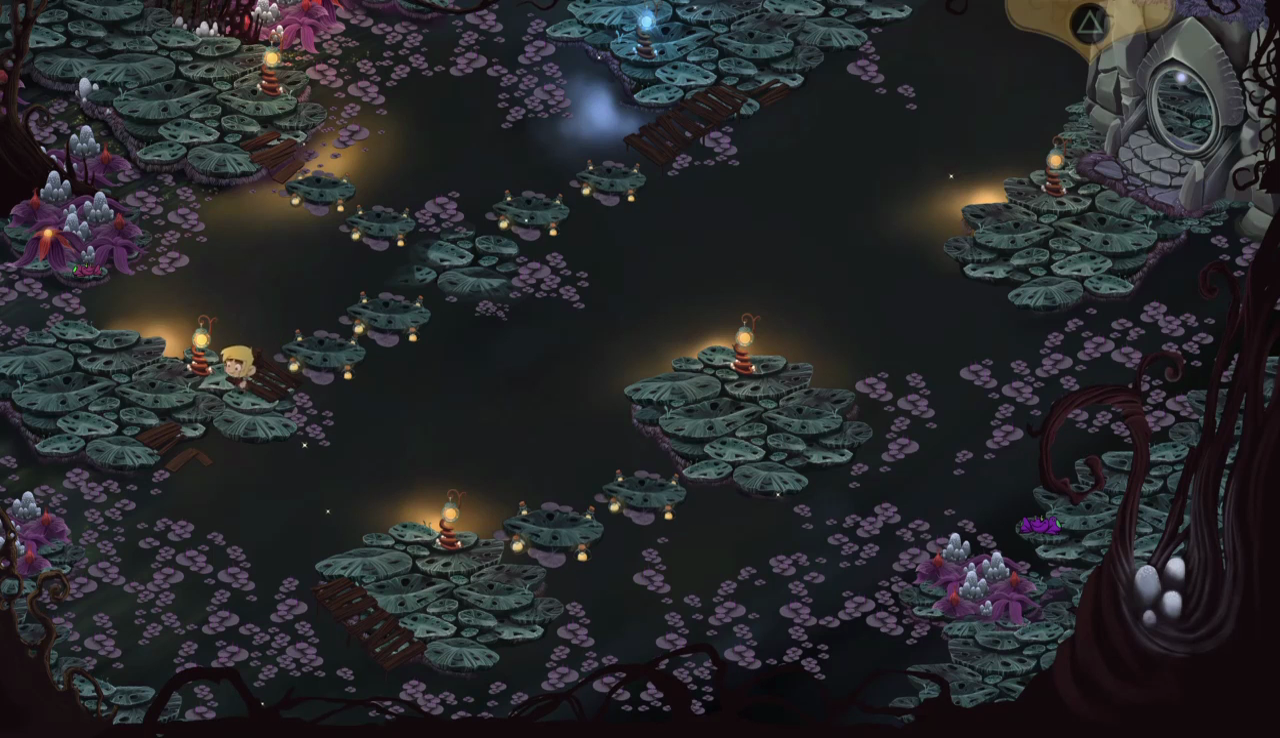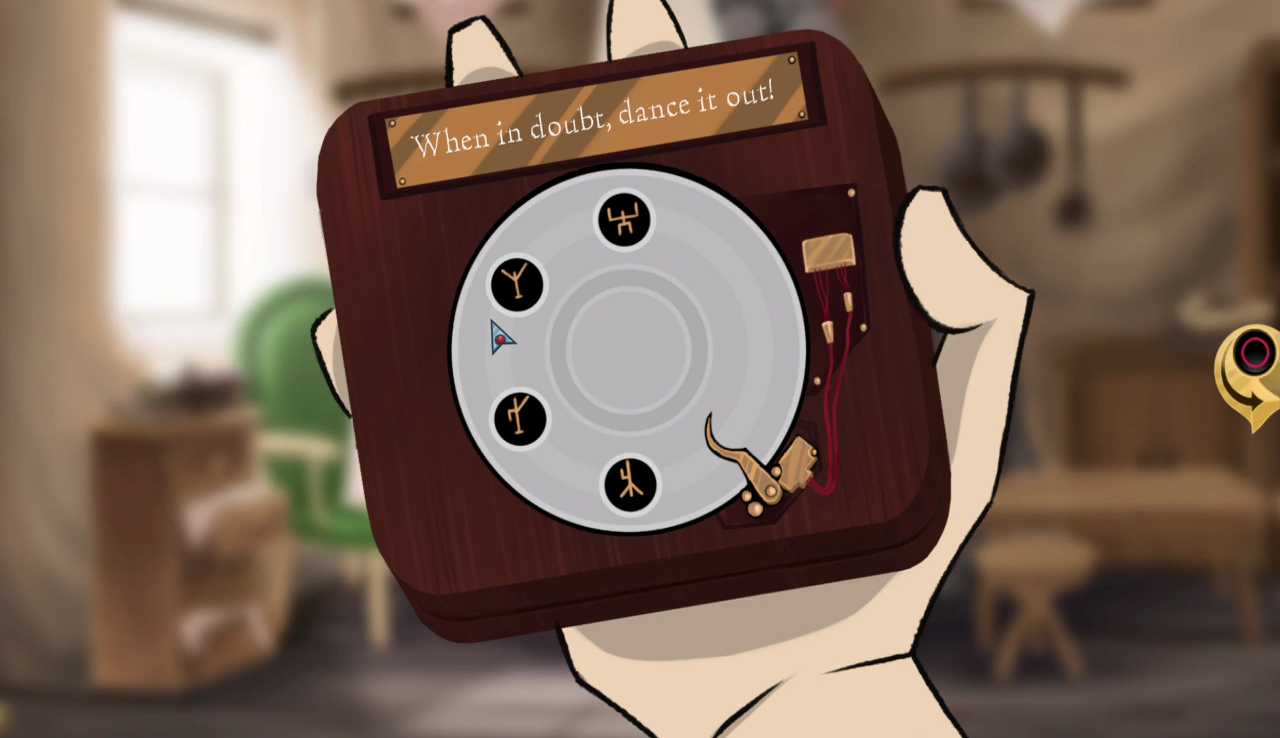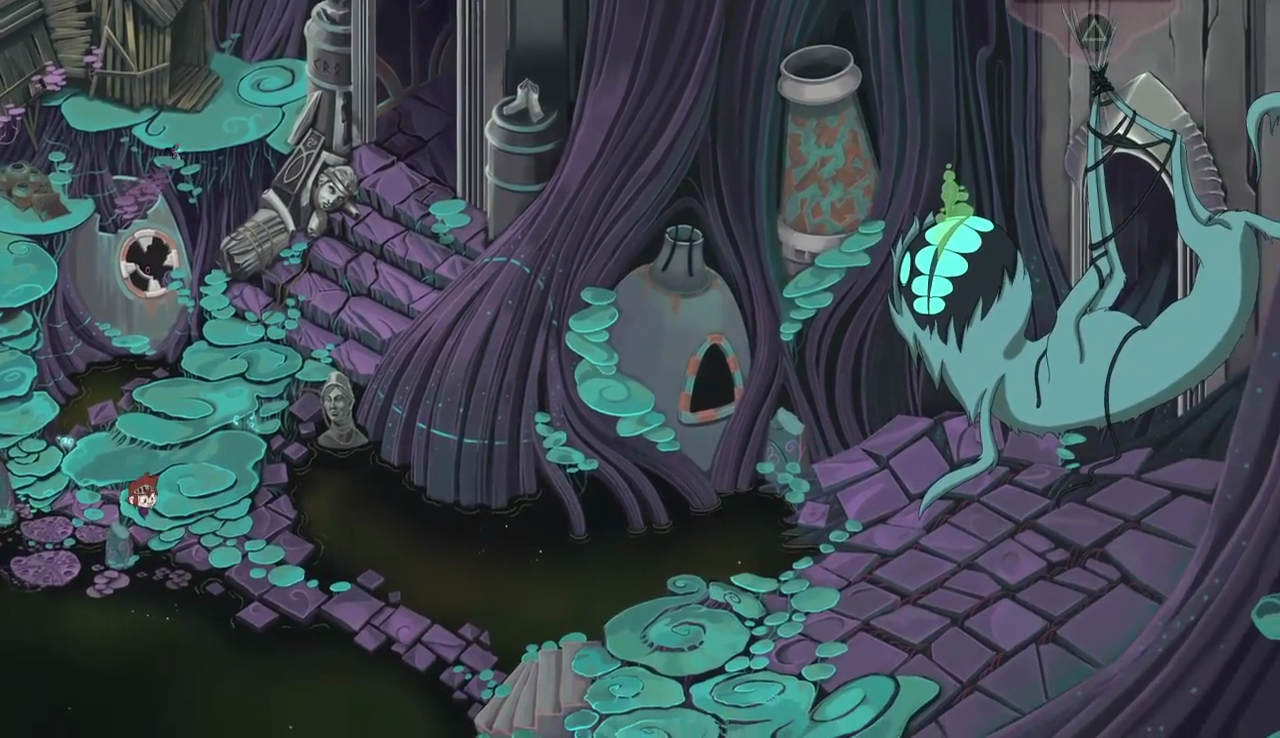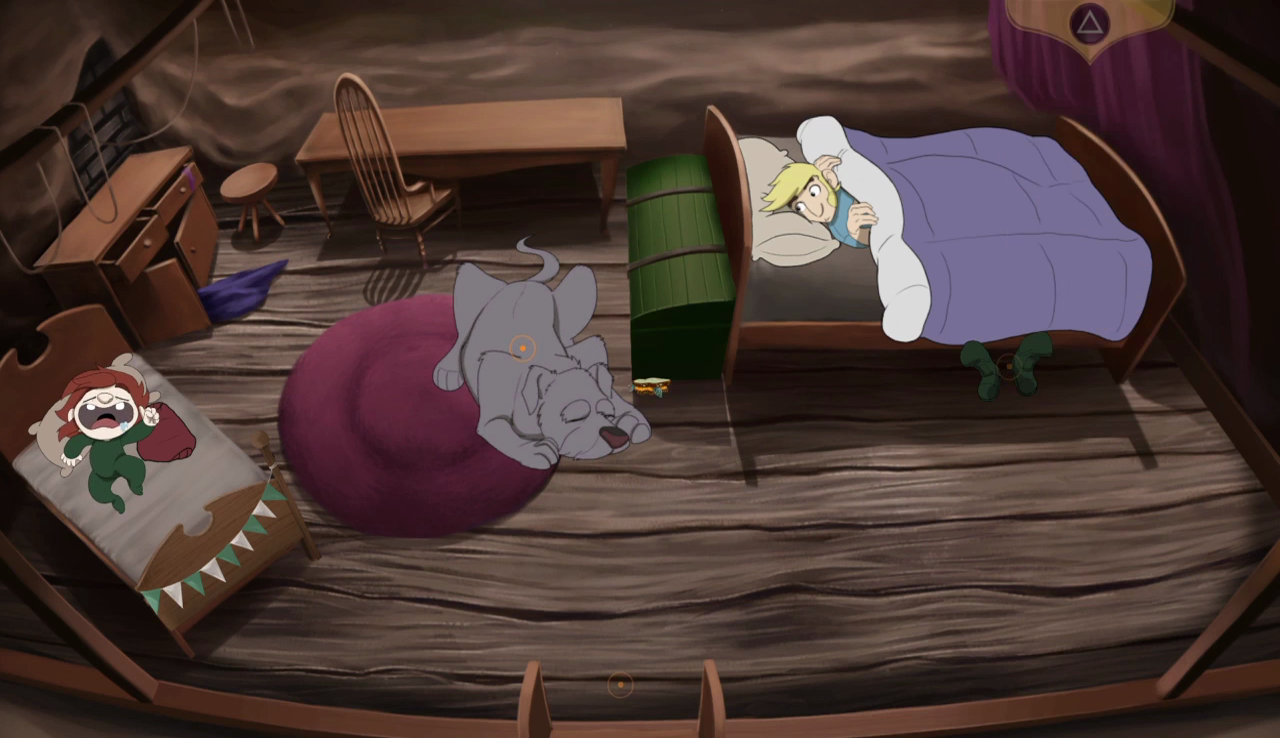Review | The Little Acre
Pewter Games’ debut title, The Little Acre, is a point and click adventure game about family and loss; despite its occasionally sobering subjects it manages to maintain a sense of humour and impress with its world.
The setting of the The Little Acre is a juxtaposition. A contrast between the rapidly modernising countryside of 1950’s Ireland -with the protagonists’ titular cottage only a short distance from a hydroelectric dam- against the ruined civilisation of the mysterious fae world Clonfira. Both worlds do share something in common however, a theme of loss.
Clonfira, while notably dominated by strange creatures and swampy terrain, has a pathway that can only be navigated by using the technology that is littered around it by an almost entirely absent people; hints of a history between humans and the absent people lay as fallen statues, and as wall engravings.
Clonfira’s loss may be historic, but Aidan & Lily’s is more fresh – The Little Acre is less a resident. Aidan’s father, Arthur, has been missing for an unspecified time. A scientist by trade, recently unemployed by his own volition, he’s a tinkerer who has been dabbling, unbeknown to his family, with a way to journey between the two worlds.
The worlds are, as I’ve hopefully made obvious, very different; and that’s part of the charm of the game. It’s more than just the setting though, the perspective of the game also shifts between worlds; from a more conventional Point and Click experience, into an isometric viewpoint with shorter, dumpier characters.

Both, however, look absolutely brilliant thanks to the frame-by-frame hand-drawn artwork from the team of animators.
The two comparisons that the visuals will inevitably summon up are that of Broken Sword and the works of Don Bluth, and there’s a good reason for both. Charles Cecil of Revolution Software, who also happens to be executive producer on the game, assembled an art team for the Broken Sword series that included two alumni of Don Bluth’s studio; meanwhile, the renowned director went on to fund & found a course in Ireland that would go on to educate the majority of Pewter Games’ team. Phew.
Aside from a few moments where lip-syncing doesn’t quite work (notably in a late cutscene) the game’s artwork (and audio, the music is excellent – if a soundtrack is available after launch its a solid investment) never falters. It is at it’s strongest when it comes to small features and creatures within the setting. Rats, birds, a rather prominent cat, as well as the various strange creatures of Clonfira, are animated with such an amazing deal of care and bring certain scenes to life.
The Little Acre‘s puzzles are an interesting mix; several sections of the game are simple pathway solving puzzles, with lanterns to alter a path ahead. Other sections follow the more traditional point and click machinations, with items in a tidy -never more than three-or-four item deep- inventory to be drag-dropped onto objects in the game world. Finally, there’s a few input puzzles, logic and memory, which break up the other sections nicely. A couple of puzzles are timing based, which didn’t cause much of a problem with the controller I was playing on -though would have been easier on mouse & keyboard- and the game uses a cursor system for most of these.

The majority of the game, though, on the consoles actually works on an analogue movement system, with buttons to interact with nearby items. In the smaller scenes this works very well, the UI is clear and logical. However, there were a couple of times where the speed of the mouse cursor to scout the scene was a sore loss; in fact I started to employ the ‘use item’ interface -wherein the game makes pulsing pips over interactive objects when you have an item ready to use- in order to ensure I could see everything interactive within the scene.
A cursor option in the options, as well as possibly an option to walk faster would have been welcome; but, that said, the puzzles required next to no back-tracking, and so after the earliest stages of the game the want for a -run- option quickly subsided.
Difficulty-wise, the game was quite a comfortable stroll; certainly taking a much more grounded and logical route with the only time I got stuck down to not seeing an interaction point in the scene. There’s no taping mobile phones to a cat, or chasing cats past duct-tape, no messing around with butterflies in the past to get cloaks in the future. You do get to ruin someone’s dinner and decapitate a gnome however.
Importantly, the humour is there; The Little Acre is a really well written, and directed, adventure game, with little jokes and quirky happenings punctuating most of the scenes of the game. Once puzzles are solved with one character the game shifts to another, with a lot of the games humour coming in the contrasted outlook from Aiden’s concerned fear, and Lily’s Awe and wonder. The switching also gives the game a cinematic feel, and I can’t think of an adventure game which has done the transition between two characters quite so well, or so often.

As a matter of fact, the only real negative I can think of when it comes to The Little Acre is it’s length. My first playthrough came in at an hour and twenty minutes. It was an amazing story, as captivating as the children’s films that inspired it, however it started to ramp up and then suddenly came to a rapid close. The way the game switches between the two protagonists as they come to the end of a room or scene is excellent, it really builds the pace, and the logical puzzles keep it so that you don’t get waylaid for too long.
The story, while brilliant, teases at a lot more; restorative powers, the tie between worlds, the power of the crystals, and of those who are absent. They’re all passed over rather quickly, or left as loose ends in the finale. It really feels as though this was a much, much larger project that was then cut down to an almost Act One state, were this a film then the director might even be accused of trying to drag it out into a series, although there’s no real indication that this is what the writers have done.
That said, the hand-drawn animation was a colossal feat, and -in keeping with the movie connection- a film of equivalent length and quality would certainly cost more than the surprisingly low price the game is selling for. It has all the twists and turns of a quality children’s film, and in that regard it’s second to none.

Comments are closed.